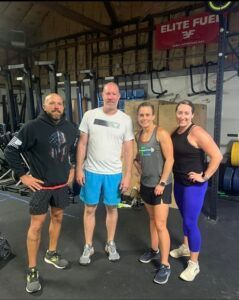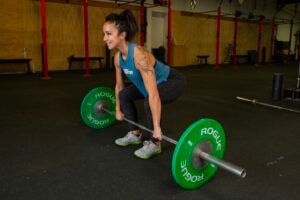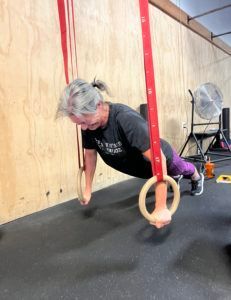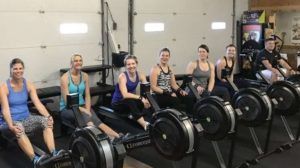Fitness Tips & Inspiration
Gym Blog
Explore our blog for expert tips and insights to help fuel you on your journey to achieving your fitness goals. Book a free intro today to chat directly with one of our coaches at the gym!

Your training sessions at Sentry serve as the foundation for enhanced fitness. However, the real magic happens BETWEEN workouts – when your body supercompensates, a key phase for recovery, muscle growth, and overall health. To make the most of your Sentry training, consider these activities during your recovery period: 1. Zone 2 Exercise: Engage ...
The post What to do between workouts appeared first on CrossFit Sentry.

By Travis In our first sessions, many of our clients in the nutrition program mention they usually skip breakfast, choosing to drink coffee instead. The caffeine may seem like a quick fix to wake up, but it’s not the best way to start your day, given its nutrient-lacking nature and dehydrating effect. Now, I’m not ...
The post STOP SKIPPING BREAKFAST! appeared first on CrossFit Sentry.

By Travis What is one strategy to enhance your motivation, ensure consistent gym attendance, stick to your diet, and achieve better results? Find a training buddy. It’s true: having a consistent exercise partner or being part of a workout group offers incredible advantages. You’ll be more likely to show up for your workouts. You’ll have ...
The post The Power Of Training Partners appeared first on CrossFit Sentry.

By Travis It’s not the latest workout fad. It’s not the hardest exercise routine. It’s not about the trendiest diet. And certainly not about that reality TV show. The true key to fitness success lies in MOMENTUM. The power of doing a bit every day and not stopping. Today, I’ll guide you on ...
The post The Key To Fitness Success appeared first on CrossFit Sentry.

By Travis Exercise at 65% of your maximum heart rate is often referred to as “Zone 2” training. Here’s an article explaining the value of Zone 2 and how often to do Zone 2 exercise. Incorporating Zone 2 into your existing workout routine can be achieved a few ways: – Personal or semi-private ...
The post How to Add Zone 2 Into Your Training appeared first on CrossFit Sentry.

By Travis I recently watched a video with Dr. Peter Attia, where he explained his approach to enhancing fitness through exercise. He terms it as “the Four Pillars,” which include: 1. **Strength** – The ability to lift yourself or an external load. 2. **Stability** – The ability to maintain maintain proper positions and preventing injuries. ...
The post The Four Pillars Of Exercise appeared first on CrossFit Sentry.

As the end of the year approaches and festive meals abound, it might seem appealing to put your health objectives on hold. January 1st is often viewed as an ideal time to start fresh with our fitness goals, but that’s not necessarily the best approach. Delaying your fitness routine until after the holidays could make ...
The post New Year, New You: The Pitfall of Postponing Fitness Goals appeared first on CrossFit Sentry.

Have you ever promised yourself a fresh start in the New Year, only to find the holiday feasts and festivities have left you feeling sluggish and unmotivated? It’s a common story, but what if you could flip the script? Imagine walking into the holiday season with a spring in your step, feeling stronger, healthier, and ...
The post Why Now Is The Best Time To Start At Sentry appeared first on CrossFit Sentry.

By Travis Optimizing your nutrition involves three key variables: 1. What you eat (or don’t eat) 2. When you ear (or don’t eat) 3. How much you eat You can enhance or limit your dietary habits by pulling one, two, or all three of these levers at a time. – What you eat – ...
The post The 3 Types of Diets appeared first on CrossFit Sentry.
Discover How CrossFit Can Get You
In the Best Shape of Your Life
Countless people have realized life-changing results with CrossFit Sentry—you can too! Book a free intro with us today to learn more about how we can help you get on the path to fitness success.


